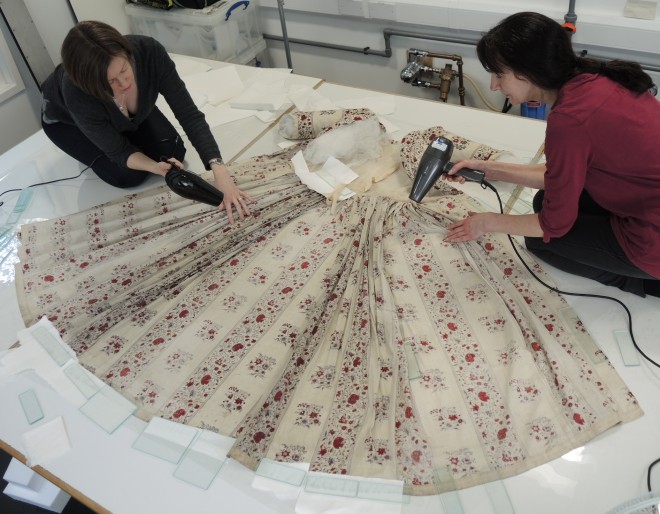This 18th-century cotton dress has just visited the Textiles conservation studio, getting ready to be displayed in our new Fashion and Style gallery which opens Summer 2016. Made of Indian block-printed cotton fabric, the bodice and elbow-length sleeves are lined with linen. This style of dress was worn open down the front, and it would have been worn with a stomacher and petticoat.
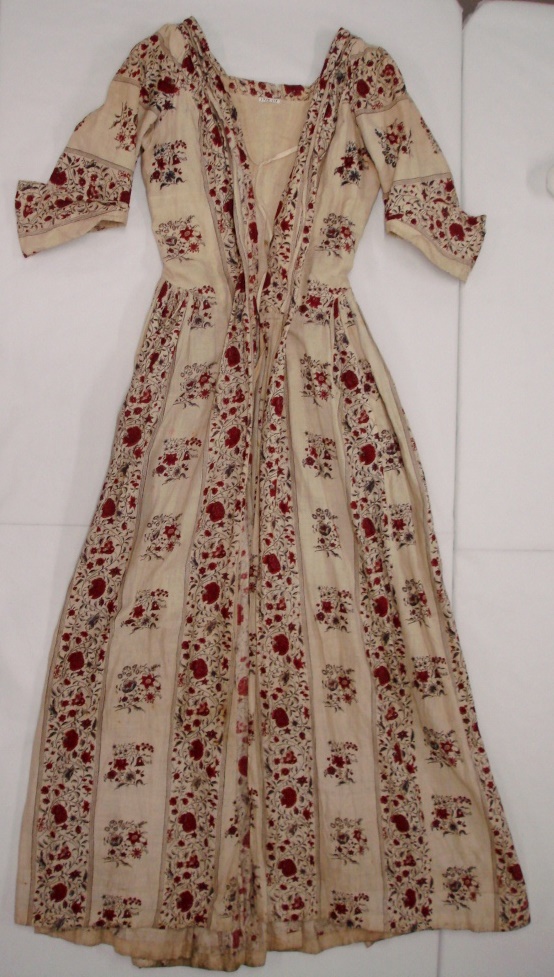
When the dress was brought to the conservation studio, it was very soiled, stained and creased. The hem was extremely grubby. There were several areas of damage, including long tears on the skirt which had been very roughly sewn together with thick cotton thread, damage to the back neck edge and splits in the pleats on the front of the bodice. There were also many small finely darned areas.
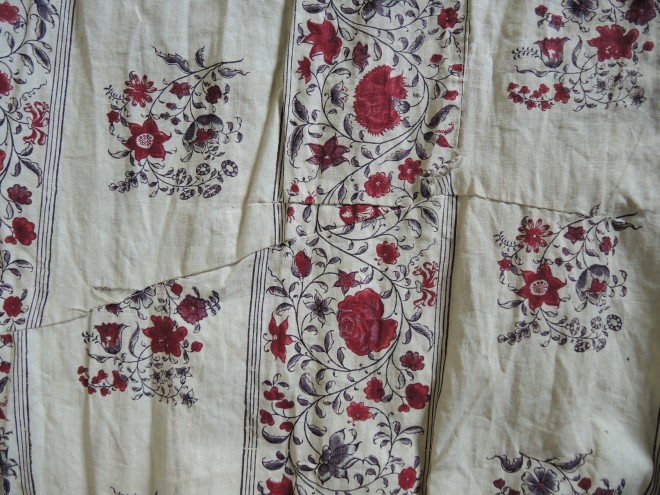
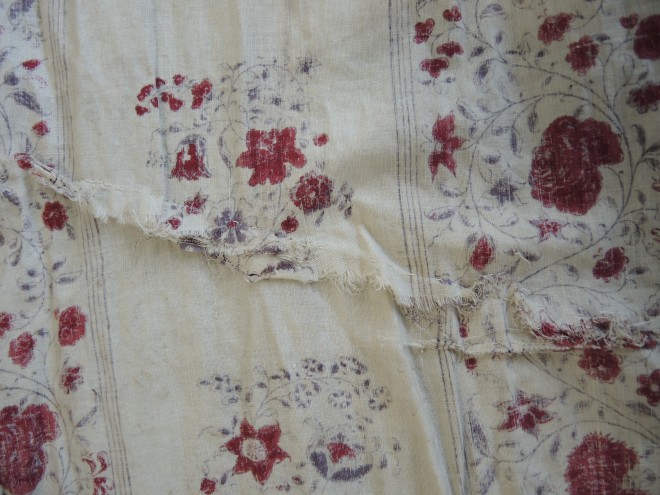
After photography, examination and documentation to record the condition of the dress, it was surface cleaned using a low-power vacuum cleaner to remove loose particulate soiling. As the dress was so soiled and creased, we decided that it would benefit from wet cleaning. Prior to wet cleaning, the roughly-stitched repairs were removed from long tears on the skirt. These tears were temporarily sandwiched in two layers of nylon net to hold in place during cleaning.
After testing all the colours to check they would not run in water, the dress was carefully wet cleaned in a cold washing solution specially formulated for textile conservation.
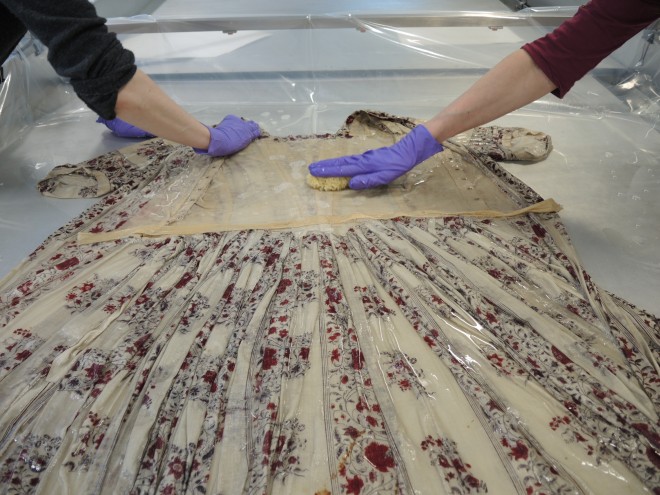
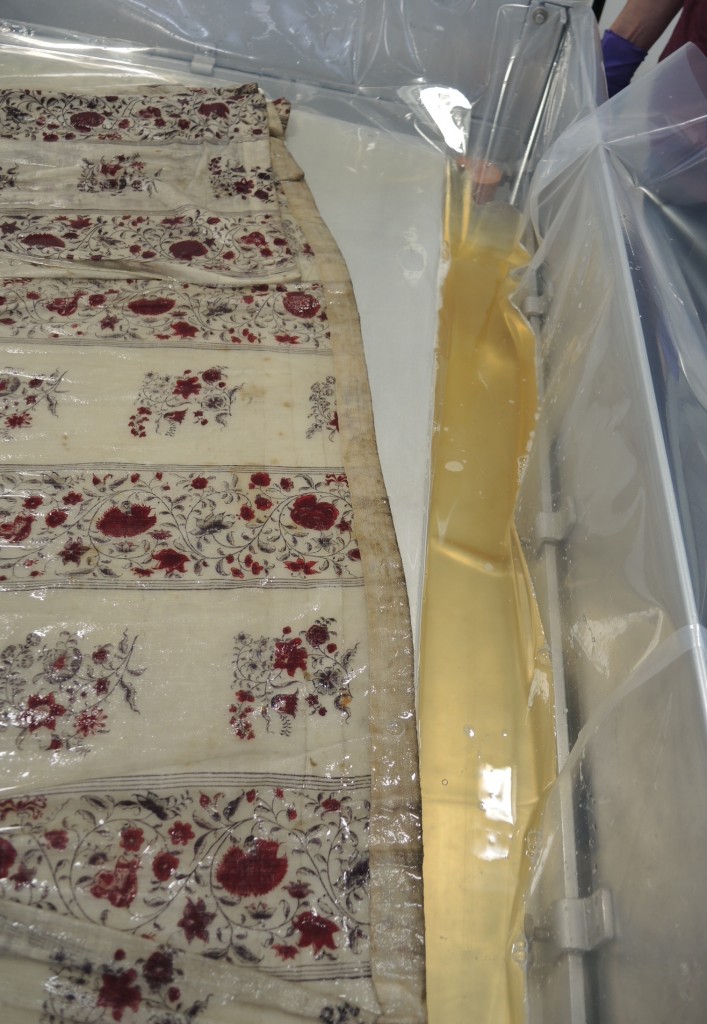
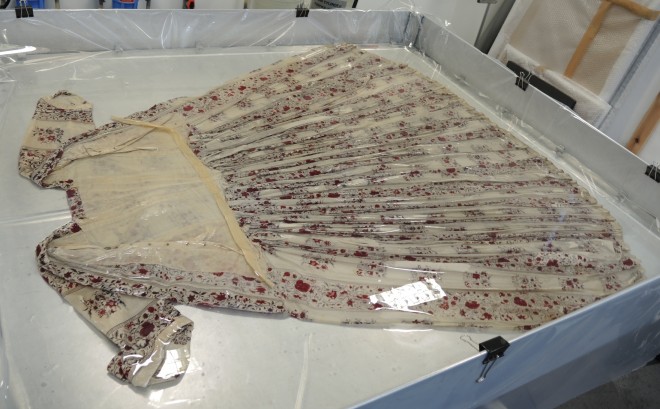
After wet cleaning. the dress was laid out on a table and excess water removed with blotting paper. Hair dryers blowing cold air and a fan were used to aid drying. Careful drying at this stage ensures the fabric dries smooth and uncreased.
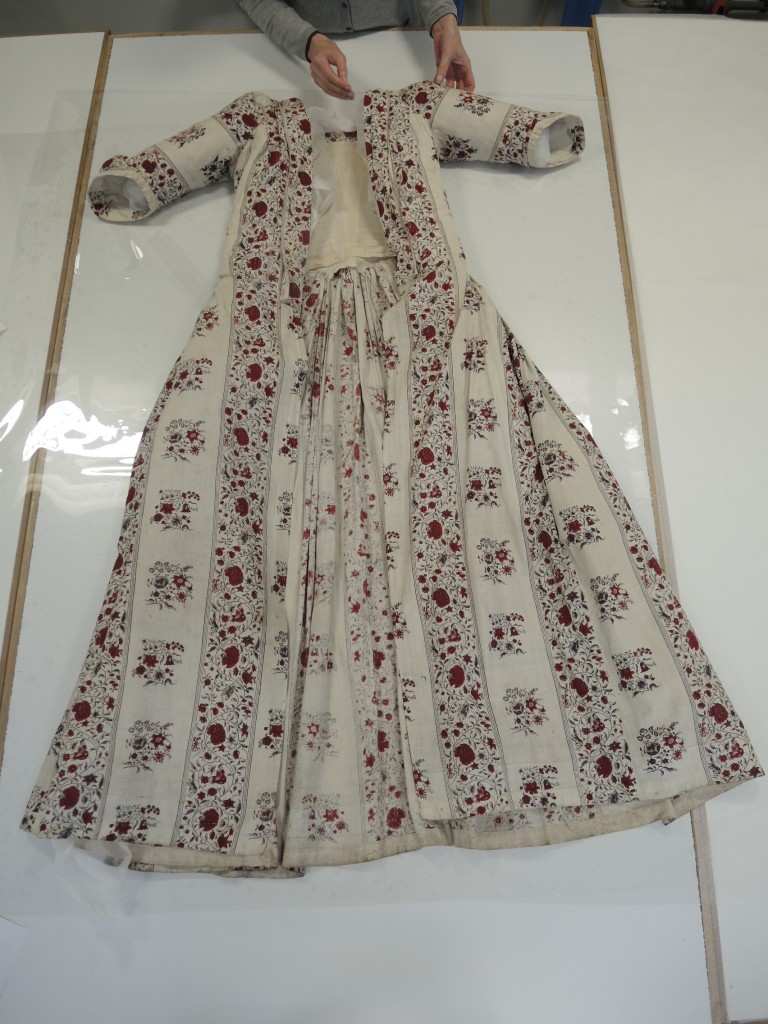
Damaged areas of the dress were then stitched onto patches of specially dyed fine cotton fabric to give support. Fine silk thread was used for the stitching.
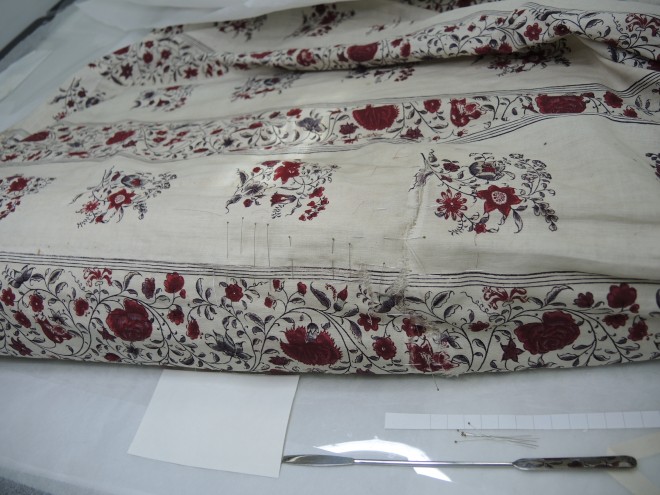
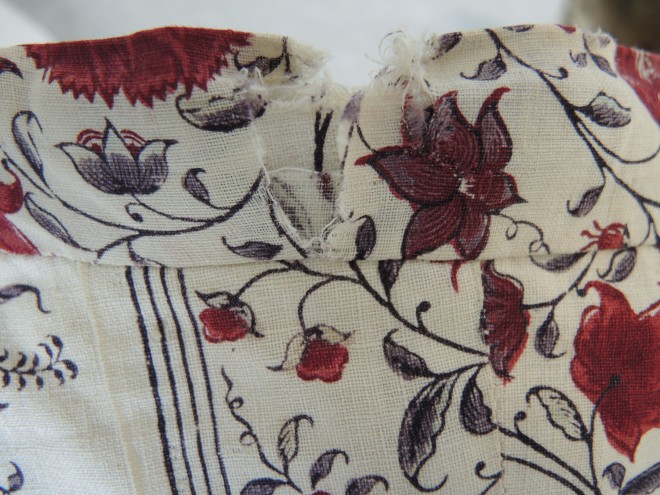
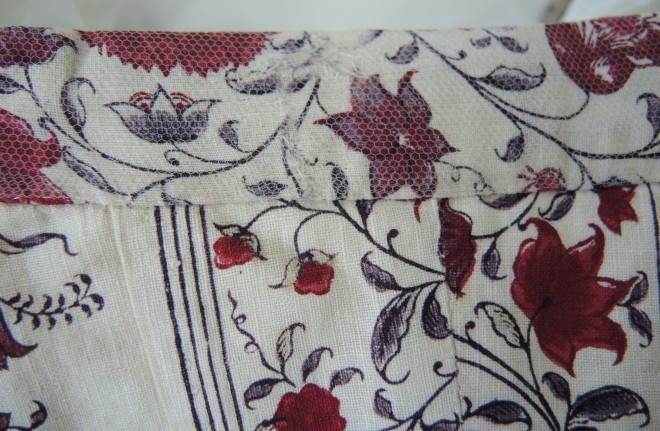
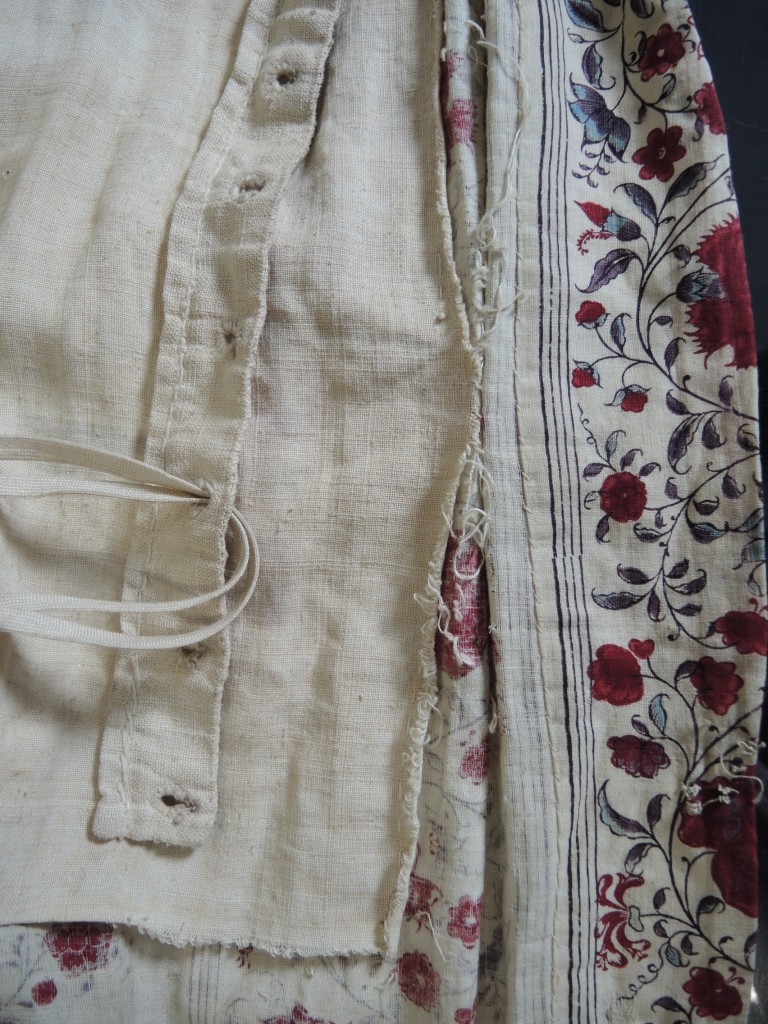
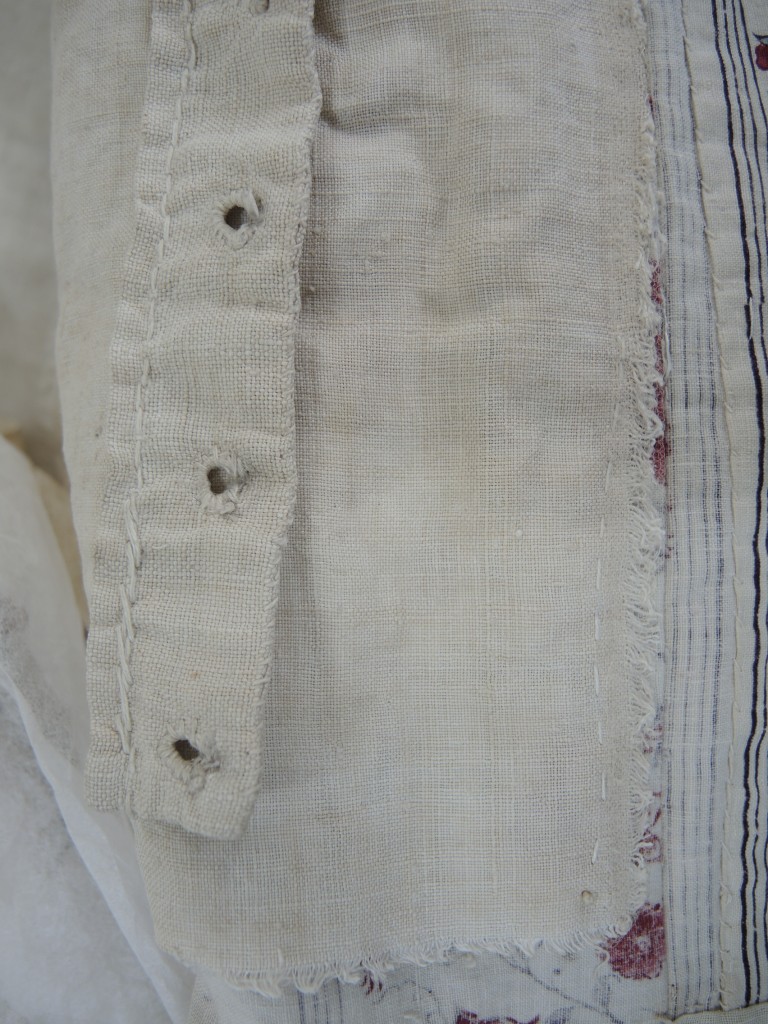
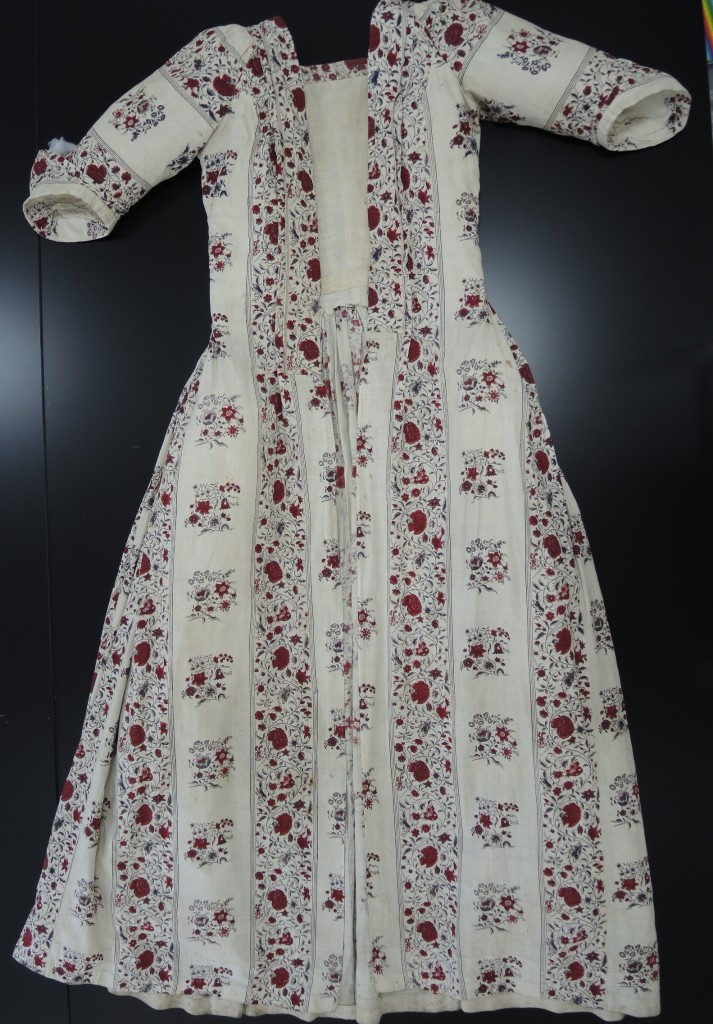
Now that the conservation treatment has been completed, work can begin on preparing the mannequin for display. A stomacher and petticoat will be made to support the shape of the dress and to give it the correct historical silhouette. Come and see the printed dress in the Fashion and Style Gallery in 2016.

